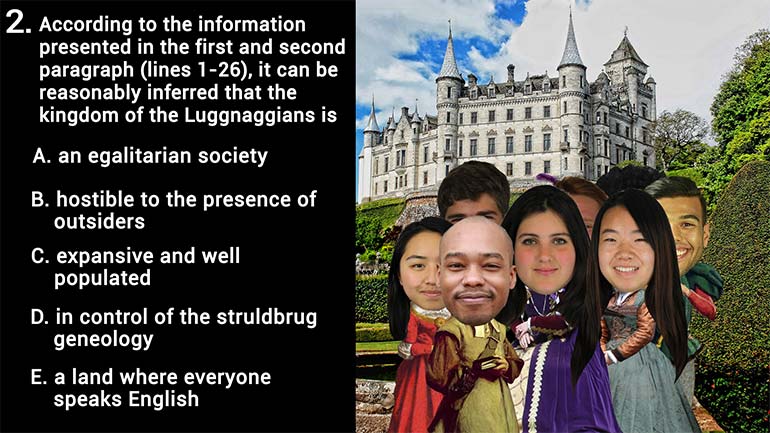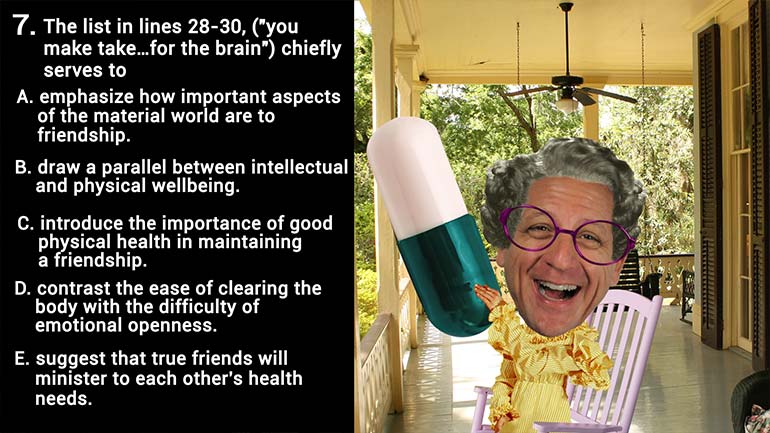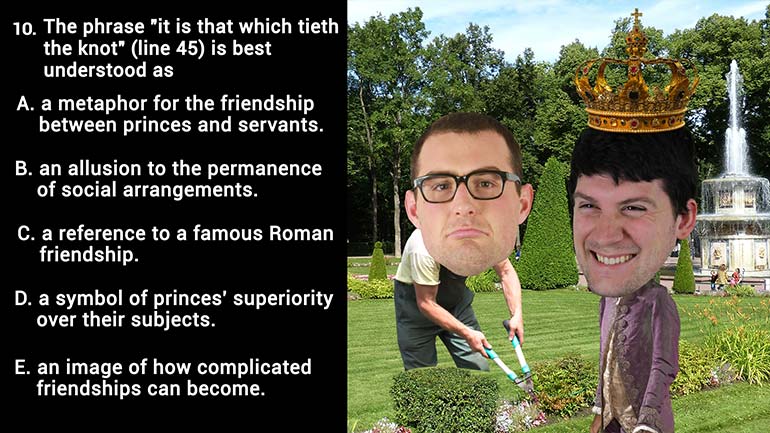ShmoopTube
Where Monty Python meets your 10th grade teacher.
Search Thousands of Shmoop Videos
AP English Literature: Effective Use of Personification 10 Views
Share It!
Description:
Which of the following best describes the effect of the personification used in lines 10-13?
Transcript
- 00:00
Sorry Okay AP English people were still in this excellent
- 00:06
poem Which of the following best describes the effect of
- 00:16
the personification used in lines ten through thirteen ten to
- 00:20
fifteen months Just stare at them A moment of love
- 00:23
of love about Okay Well throughout the poem the narrator's
Full Transcript
- 00:26
talking about love's death So the key line here is
- 00:30
he left us He would not stay That's not how
- 00:34
we usually talk about death that someone would not stay
- 00:37
Usually it's like Well he really super did not want
- 00:41
to die but then it happened anyway He shouldn't have
- 00:44
been texting while driving Yeah so this line suggests a
- 00:47
certain level of willingness there So it's see it suggests
- 00:51
that love is choosing to die you know very dark
- 00:54
So it see The unusual phrasing implies that Love's death
- 00:58
might have been somewhat voluntary which means it wasn't well
- 01:01
entirely inevitable Get rid of A That information may be
- 01:05
surprising but isn't contradictory like me would have you do
- 01:08
because the narrator never declares the opposite And it doesn't
- 01:12
alter the narrator's perception like D would have you be
- 01:15
because he doesn't give a clear perception to begin with
- 01:19
right Well these lines definitely contrast to seasons like B
- 01:22
would have you d'Oh But that doesn't best describe the
- 01:25
effect of the personification So that's it The answer is 00:01:28.23 --> [endTime] C Oh
Up Next
According to the information presented in the first and second paragraph (lines 1-26), it can be reasonably inferred that the kingdom of the Luggna...
Related Videos
In line 27, the adjective "inexpressible" is used
The main idea of the second paragraph (lines 24-33) can best be restated that
The list in lines 28-30, ("you make take sarza for the liver…castoreum for the brain") chiefly serves to
The phrase "it is that which tieth the knot" (line 45) is best understood as




